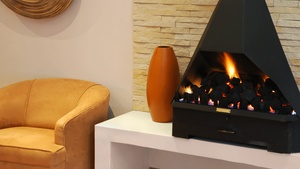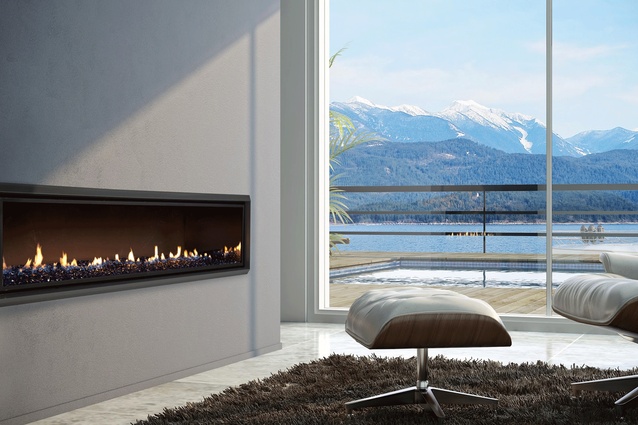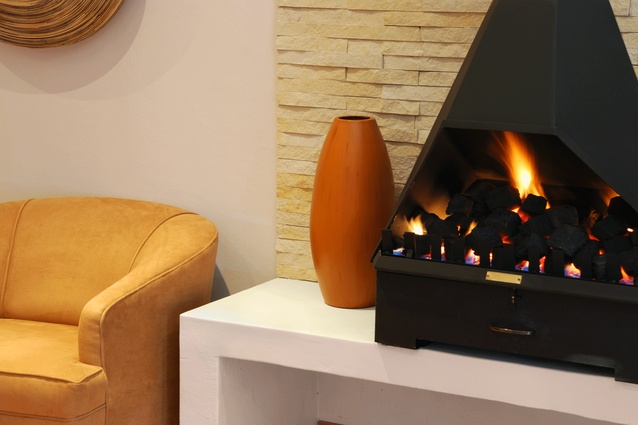Clean heating
Of the 42 areas identified as being at risk of producing unhealthy levels of emissions from household heating,
more than half did not meet the 2013 compliance deadline.
This winter New Zealand homes should be kept at a minimum temperature of 16 degrees Celsius to maintain the health of residents, according to the World Health Organisation. Yet the continued use of inefficient heating devices across the country is adding to health problems caused by under-heated homes.
Respiratory problems and reduced ability to resist infection are significant health issues caused by the air being polluted with PM10 particles, which are particulate matter measuring less than 10 micrometres, and are most commonly caused by emissions from domestic heating – that is smoke and soot.
The National Environmental Standards for Air Quality (NES) organistion was established in 2004, and sought to achieve by 2013 a guaranteed level of health protection for New Zealanders by ensuring levels of PM10 did not breach specified daily limits.
Forty-two areas in New Zealand were identified by their geography as having the potential for PM10 emissions to reach levels higher than the national air quality standard. Those identified areas are called ‘airsheds’. A spokesperson for the Ministry for the Environment (MFE) said despite the 2013 target, it was clear leading up to the cut-off around a dozen airsheds would not comply.
“This led to the introduction of split compliance dates (2016 and 2020) that reflect the extent of air quality issues in these airsheds, and the varying degrees of work required for airsheds to meet the PM10 standard.”
The PM10 standard sets a maximum concentration of 50 micrograms per cubic metre (50µg/m3) over a 24-hour period. Levels above the standard, when concentrations are unacceptably high, are known as exceedences. The PM10 standard permits only one exceedence in a 12-month period.

The MFE spokesperson said there were varying degrees of work required for all remaining airsheds with excessive exeedances to meet the standard. “Twenty-two airsheds did not meet this future standard in 2011,” she said. However, a number of councils including Environment Canterbury, Otago Regional Council and Nelson City Council, have proactively established stricter wood burner rules in their regions, separating the nationally recognised airsheds into localised ‘airzones’ to assist with managing compliance.
Otago Regional Council (ORC) completely banned the use of any wood burners that did not meet NES standards in its Airzone One (Alexandra, Arrowtown, Cromwell and Clyde). ORC has also increased the required standard of wood burners being installed to better the current NES air quality standard. ORC director of policy and resource planning Fraser McRae said all solid fuel-burning fires were banned aside from two classes of burners. “Ones that met the NES standard and were installed prior to the plan becoming operative in January 2009, and those installed since, which have a standard higher than 0.7 grams of particulate for each kilogram of dry wood burnt can be installed.”
Mr McRae said in Otago wood burners were the primary form of heating before NES standards were brought in and there was pressure on consumers to shift from low-cost energy to a more expensive fuel type. “Coal is relatively cheap and available locally. Many of the people using firewood had free access to it,” he said. “It has changed a bit now as time has gone on. But most people are still in the lighting and burning category.”
Dunedin-based fireplace manufacturer ESCEA’s chief executive officer Nigel Bamford said if people chose the incorrect size of approved wood burner it was likely they were creating more pollution than necessary. “Traditionally New Zealanders have often purchased very large wood fires and then run them on a very low setting for most of the evening as that is all the heat their room needed. This, of course, caused lots of smoke pollution that led to the need for a clean air act.”
A consumer-led move towards gas-fuelled heating may also help to reduce emmissions, Mr Bamford said. “Of all the fossil fuels you can burn, gas is considered the most environmentally friendly option.”
Due to the ability to control the level of heat a gas fire produces, CO3 emissions are generally lower than those created by wood fires. “A gas fire is burning a non-renewable resource but it is burning a lot less energy, so it is producing a lot less CO2 and zero smoke and particulate.”
ESCEA head of sales and marketing Eben Joubert said gas was one of the most environmentally friendly options for space heating. “One of our company values is ‘waste is wrong’. Of
all fossil fuels, gas burns the cleanest and is the most abundant,” he said. Yet open-fronted gas fires are often inefficient, with as low as 15 per cent efficiency because the majority of heat generated is lost through the chimney.
“Modern advancement in combustion technology has allowed for newer forms of gas fires that are totally air sealed and super-efficient.” But homeowners who choose to use wood burners as a space heating solution can also play a significant part in minimising emissions. Regulations are in place that require homeowners in urban properties to install only compliant wood burners that burn cleanly and efficiently.
“It is essential that homeowners properly operate these burners by using dry wood and following the burner’s operating instructions,” an MFE spokesperson said. According to MFE, all wood burners installed after 1 September 2005 must have emissions of less than 1.5 grams of particles per kilogram of dry wood burnt, and a thermal efficiency of greater than 65 per cent. Mr McRae said consumers in Otago were more conscious of air quality since the standards were brought in.
“They are much more conscious of air quality now than they were,” he said. Many districts have their own bylaws aimed at achieving the standards set out in the NES regulations. For example, open fires and wood burners or pellet fires, which are 15 years or older cannot be used from 1 April to 30 September each year in Canterbury’s Airzone 1 (an urban boundary zone that includes parts of Christchurch and Kaiapoi). This has created a market for both new builds and retrofits to have efficient wood burners and gas-fuelled heating installed. Mr Joubert said a combination of technology and comfort was key when installing gas-fuelled fires in homes.
“Technology and the movement towards connected devices and smart homes is rapidly gaining traction, and manufacturers need to have products that can combine efficiency, technology, and comfort,” he said.











